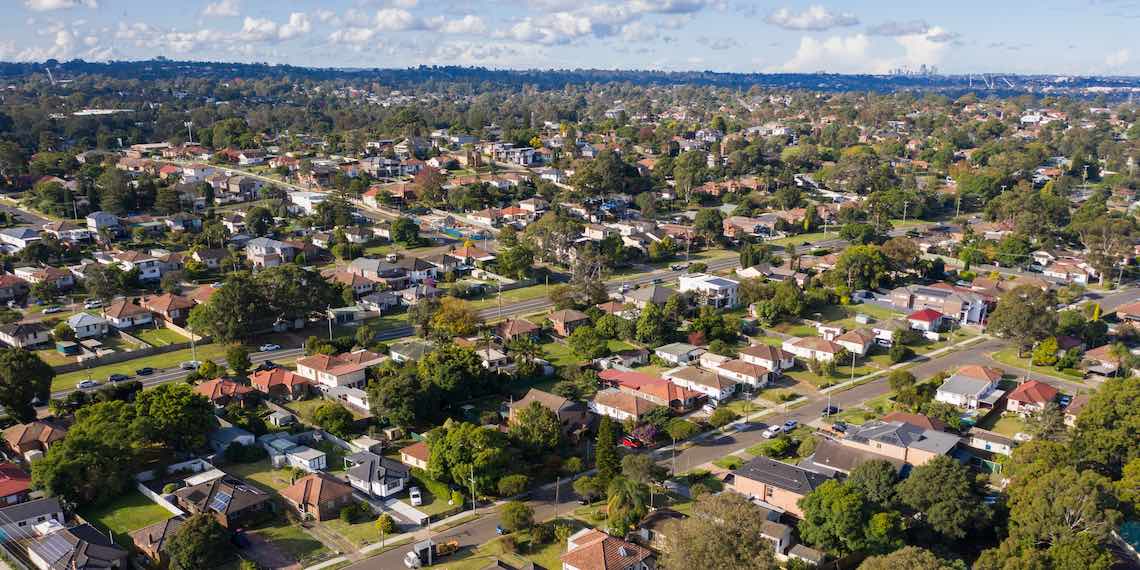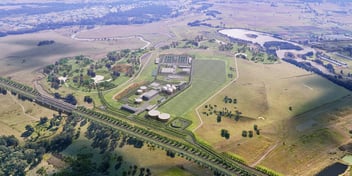The circular economy vision that could transform Western Sydney

Sydney’s Western Parkland City offers endless possibilities for the development and implementation of a truly circular economy — one expected to be worth more than $1 trillion — but collaboration will be key for delivering a liveable, sustainable and resource-savvy region.
Sydney Water launched a new white paper in partnership with NSW Circular last week which outlines a shared vision for how to create a circular economy for Sydney’s fast-growing west.
Covering eight local government areas, the Western Parkland City is expected to become an economic powerhouse centred around a planned Bradfield City Centre and home to the new Western Sydney Airport.
But realising a thriving, liveable Western Parkland City depends on government and the private sector collaborating on the circular economy, Sydney Water Managing Director Roch Cheroux said.
“Transitioning to a circular economy ecosystem through thoughtful land-use planning and wider re-use of water, materials and waste will be critical for unlocking sustainable economic growth,” Cheroux said.
“But this will rely on councils, governments and businesses working together to streamline approvals for technology and other vital investment.
“Western Sydney has the opportunity to be a global leader in circular economy implementation and with the extent of greenfield development being planned for now we must embrace this opportunity.”
The white paper — Unlocking the circular economy in the Western Parkland City — outlines important focuses and areas of development and planning that will be required to ensure the future city becomes truly sustainable.
“Sydney Water is proud to have led this work, which presents a joined-up view on what needs to happen if we are serious about the Western Parkland City becoming a global benchmark for a circular economy on the largest scale seen to date in Australia,” Cheroux said.
“The circular economy is a trillion-dollar economic opportunity for Australia, and we have the opportunity to become world-class leaders in this field. Our vision for a circular city will create a 21st century city that is green, resilient and prosperous.”
Based on input from 60 stakeholders across business, government, councils, academia and communities, the paper sets out six recommendations to ensure the delivery of a circular economy, starting now.
Setting circular city targets and policies
The paper recommends fostering strong alignment and coordination between government agencies, private sector and local communities, including data sharing, accountability and shared prioritisation of circular economy outcomes.
“This can be achieved by developing and publishing the circular economy vision, targets and key success indicators for the Western Parkland City,” the paper says.
“These should be set and shared by state and local governments, in collaboration with stakeholders in the city’s future, such as local business, researchers, community groups and residents.”
Valuing circular economy outcomes for infrastructure investment
Driving the shift to a circular economy will be aided by including performance-based circular economy targets and objectives in integrated infrastructure investment criteria and design briefs.
“The Western Parkland City has the potential to be an exemplar for new urban systems that integrate resource management infrastructure for more efficient and effective outcomes,” the paper says.
“However, an integrated approach to infrastructure development needs a new approach to valuing the benefits of new infrastructure investment.”
Better collaboration with industry
Collaboration has been highlighted in the paper as key to making testing new solutions easier, as well as navigating regulatory processes cost effectively.
“The ability to access regulatory information and public funding for circular economy innovation is critical to the successful integration of circular technologies into city architecture and infrastructure,” the paper says.
“To help cut red tape and remove current barriers to innovation, we suggest creating a central point of access for the information, government support and partners needed to bridge information gaps and drive circular solutions in the Western Parkland City.”
Systems and incentives to connect circular supply chains
There is expected to be a significant increase in industrial activity as the Western Parkland City develops, and creating the right conditions to grow circular supply chains quickly and at scale has been identified as crucial.
“Supply chain-matching solutions should be developed at scale to enable the ecosystem to grow. This includes matching not just production material needs, but also opportunities for shared use of infrastructure, logistics and other resources,” the paper says.
The paper also recommends promoting the participation of small- and medium-sized enterprises in circular supply chains, and incentivising circular partnerships and industry co-location.
Optimising water cycle management
The paper also highlights that new investment in water infrastructure will be absolutely critical to meeting the city’s projected water needs.
“The projected growth in population and industrial activity in the Western Parkland City means the availability of water is more important than ever before,” the paper says.
“An estimated additional 47 GL of water per year on average will be required. Importantly, one of the goals of these investments should be accelerating the uptake of recycled water.
“Within the Western Parkland City, recycled water can be delivered from the Advanced Water Recycling Centre or through on-premises water recycling facilities to chill recycled water for cooling buildings.”
Expansion of biofuel production
Focusing on turning waste into a clean, green resource will also be a key element of creating the circular economy, but will require the support and implementation of waste recovery initiatives within the region.
“The Upper South Creek Advanced Water Recycling Centre can support a large-scale bio-resources hub that can offer integrated circular water, energy and organic waste management at a precinct level,” the paper says.
“However, this requires sufficient volumes of organic waste for the hub to be commercially feasible. This can be achieved by aggregating food and beverage waste, as well as source separated organics from businesses, farms and households in surrounding areas.”
Cheroux said the opportunities available for the Western Parkland City are endless, but must be embraced now to provide for the future.
“Sydney Water will continue to develop new partnerships to ensure we can play our role in the circular economy and fulfil our vision to create a better life with world-class water services,” he said.


